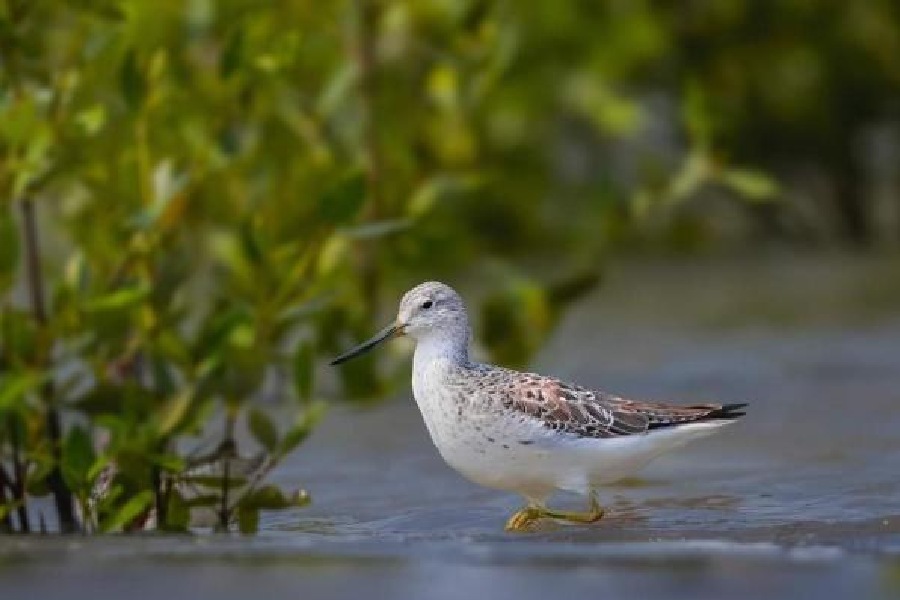A remote island in the southernmost tip of Bengal might be a preferred migratory stop of an extremely rare shorebird, birdwatchers have said based on recent sightings.
A chance click by a forest official in February 2022 revealed three Nordmann’s greenshanks among a flock of birds on the Lothian island in the Bhagabatpur range in the heart of the Sunderbans. This newspaper has reported the sighting.
A sanctuary on the island is home to turtles, crocodiles and other animals, besides being the destination of migratory birds.
The sighting — documented as the first recorded sighting of Nordmann’s greenshank in Bengal and second in India — stoked interest among birdwatchers.
Multiple groups have since visited Lothian island, around 125km from Kolkata, hoping to click the pigeon-sized bird, named after a 19th-century Finnish biologist and parasitologist, Alexander von Nordmann.
Apart from the fact that it nests in Russia and winters in southeast Asia before returning to Russia in spring, not much is known about the bird, said experts.
“Several birdwatchers’ groups from across the country have been visiting the island. There have been at least three sightings this year, the latest as recently as the third week of March by a group from Delhi,” said Milan Kumar Mandal, the divisional forest officer of South-24 Parganas, who had clicked the birds in February 2022.
Permission from the forest department is mandatory to visit the island.
“We clicked three Nordmann’s greenshanks in Lothian on February 25 this year. The sightings definitely indicate that the Sunderbans is a wintering destination for the bird,” said Sandip Das of Birdwatchers’ Society.
The quest for Nordmann’s greenshank has been documented in the March 2024 edition of Indian Birds, a bi-monthly ornithology journal.
“With an estimated population of about 900-1200 individuals... it is categorised as ‘Endangered’. It breeds during June–August in sparse larch forests near the coasts of western and northern Sea of Okhotsk, bays of Khabarovsk Krai, and northeastern Sakhalin Island of Russia,” says a report in the latest edition of the journal.
The report in Indian Birds says: “It migrates southwards along the coasts of China, South Korea, Hong Kong, and Taiwan to spend the non-breeding period mainly in the mudflats and sandflats of Thailand, Cambodia, Vietnam, Malay Peninsula, and Bangladesh.”
“With sightings of multiple individuals from two consecutive wintering seasons from West Bengal coasts, there is now reason to speculate that this species perhaps winters here regularly but was hitherto unrecorded due to the remote nature of the tidal mudflats where it chooses to stay.” In April 2022, a Nordmann’s greenshank was trapped and tagged with a GPS-tracking microchip in Mai Po Nature Reserve in Hong Kong before being released.
“It left Hong Kong on 8 May, 2022, 23 days after being released. GPS logs showed that it was in India from 29 December 2022 to 20 April 2023. During the period, it mainly stayed around the tidal areas at the mouth of Rasulpur River in East Medinipur district and outlying sand flats south of Sagar Island in the Bay of Bengal,” the report in Indian Birds says.
Das and a couple of fellow birdwatchers camped in East Midnapore for days in pursuit. They could not find the tagged bird but clicked three different Nordmann’s greenshanks in East Midnapore.
“This only gives credence to the theory that the Nordmann’s greenshank winters in this part of the world. But it picks a habitat very carefully, considering multiple factors. Minimum human interference is one of them,” said Das, also a regional reviewer for eBird, an online database of bird observations.
